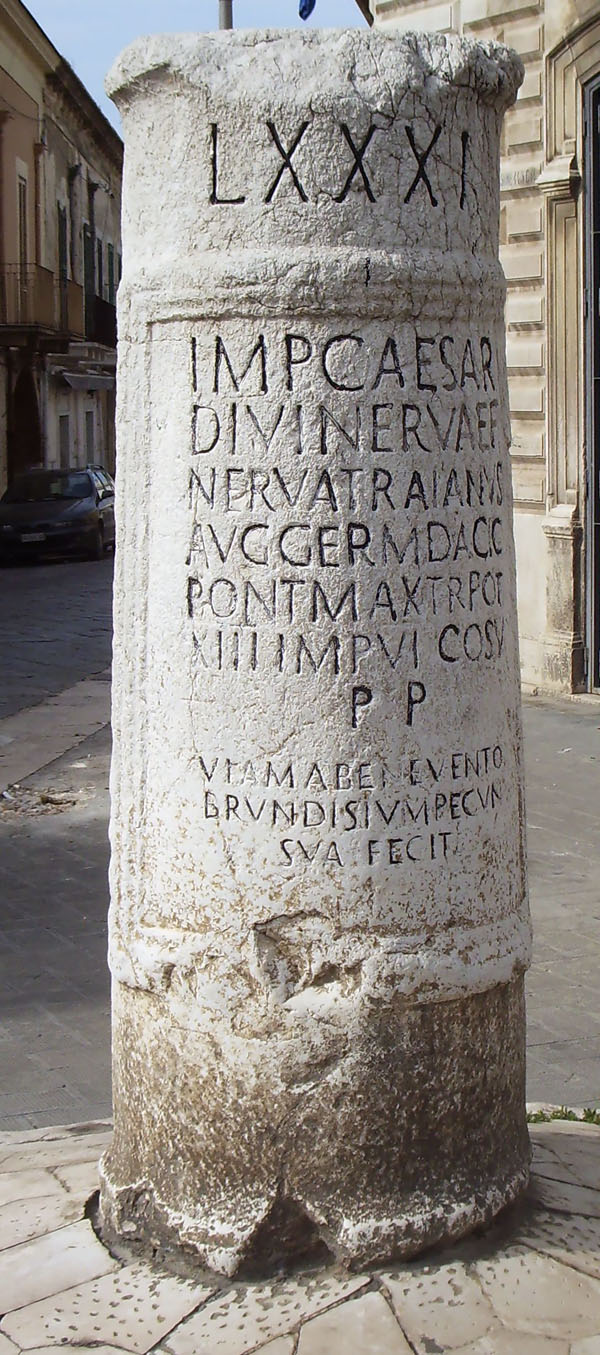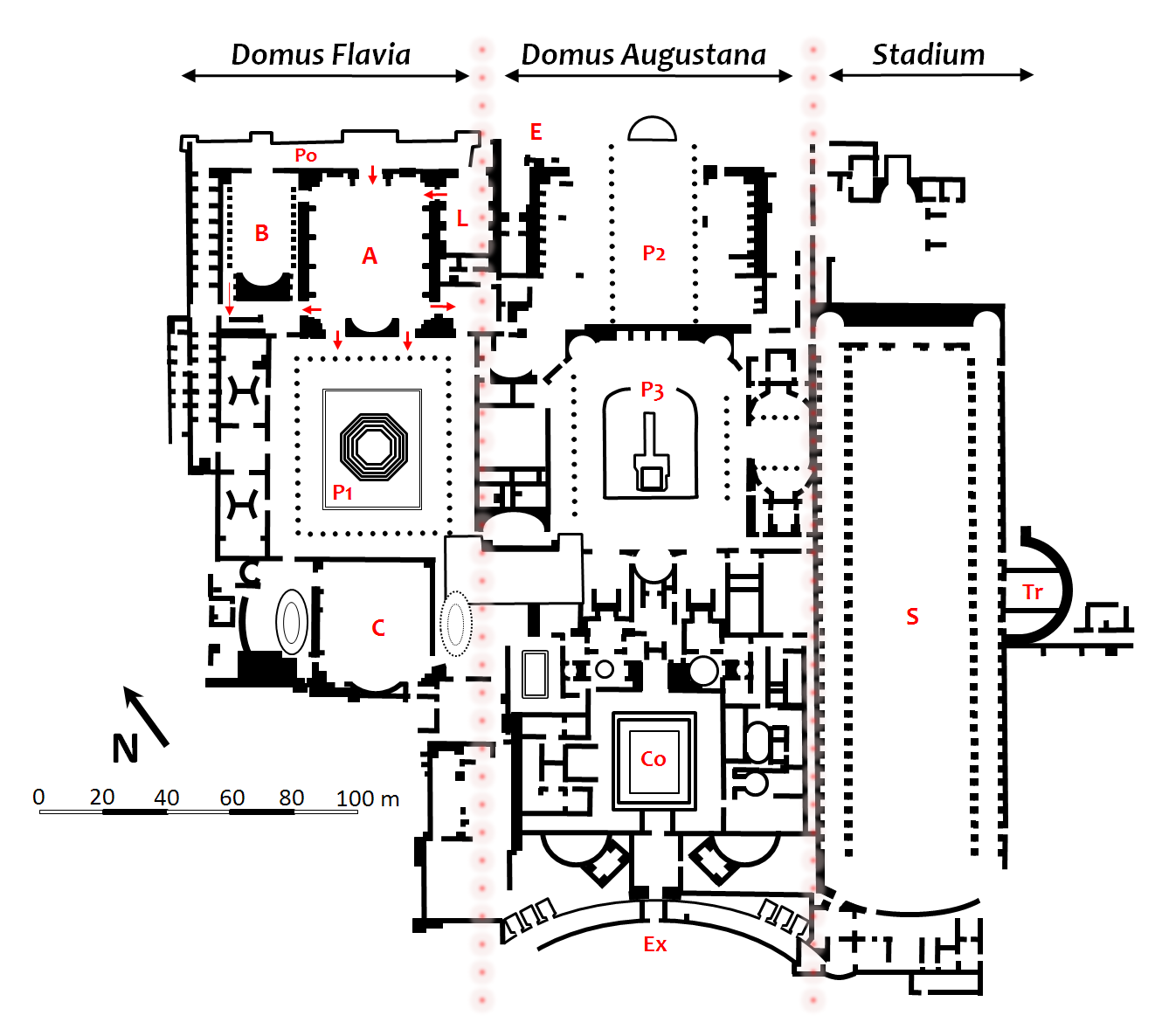|
Imperial Villa Of Vicarello
The Imperial Villa of Vicarello was an ancient Roman villa-estate that belonged to the emperors starting from Domitian (r.81-96). It is situated near the north shore of Lake Bracciano and near the village of Vicarello, near the modern town of Trevignano Romano. The current private Vicarello estate is a park of about 2000 hectares in which the Roman remains of the villa and associated monumental baths were discovered in the 19th century, some of which are still preserved. The two main ancient centres are: *the village which includes the now-disused 17th century Villa Valadier overlooking the lake, built on the remains of the Roman villa or ''vicus'' (village). *about 1 km to the north the remains of the (mainly public) baths next to the natural springs, the ''Aquae Apollinares'', which had also been a healing sanctuary to Apollo since Etruscan times as evidenced by the many votive objects found. Vicarello was also an estate in the Roman period called the ''Vicus Aurelius' ... [...More Info...] [...Related Items...] OR: [Wikipedia] [Google] [Baidu] |
Villa Of Domitian (Sabaudia)
The ancient Rome, ancient Roman Villa of Domitian (Italian: Villa di Domiziano) is located on the shore of the lagoon of Paola (Lake Sabaudia) between Sabaudia and San Felice Circeo, Italy, at a locality known as Palazzo. It was one of the palaces that belonged to the emperor Domitian, and which he called his villa "at Circeii". It is considered one of the most important yet little-known Roman imperial residences in Latium. The enormous estate occupies a beautiful site over almost an entire peninsula of 45 hectares, mostly unexcavated and a protected area in the Circeo National Park. The site was referred to in some verses by Martial. It was near to the ancient city of Circeii. History The earliest villa here was built in the late-Roman Republic, Republican and Augustus, Augustan eras. It is likely that it was the villa of the Triumvir Lepidus (triumvir), Lepidus to which he was exiled in 36 BC in the 2nd Triumvirate until his death, after a dispute with Octavian. The villa w ... [...More Info...] [...Related Items...] OR: [Wikipedia] [Google] [Baidu] |
Vicarello Cups
The Vicarello Cups are four silver cups discovered in 1852 in the healing sanctuary and baths of '' Aquae Apollinares'', at Vicarello, Italy, near Lake Bracciano. Their appearance recalls Roman milestones and they are engraved with the route from ancient Gades (modern Cadiz) to Rome. History The cups were discovered in 1852 when the existing bath complex near Vicarello was developed into a more modern one. The cups were found inside a crevice in the rock from which the thermal waters issued, along with a huge votive deposit consisting of ca. 5,000 bronze coins of Greek, Etruscan and Roman origin, including ca. of aes rude (bronze dating from 8th-4th c. BC), 34 vessels (3 of gold, 25 of silver, 6 of bronze) of which 12 were inscribed (including the cups themselves), and various metal objects such as plates, small statues in bronze and other materials. Most of the finds from the deposit, including the cups, are to be found in the Museo Nazionale Romano, while a few of the ... [...More Info...] [...Related Items...] OR: [Wikipedia] [Google] [Baidu] |
Palace Of Domitian
The Palace of Domitian was built as Roman emperor Domitian's official residence in 81–87 AD and was used as such by subsequent emperors. Its remains sit atop and dominate Palatine Hill in Rome, alongside other palaces. The Palace is a massive structure separated today into three areas. In the past, these partitions allowed business and political matters to have separation from private life while their close proximity allowed them to be conducted in parallel if required. The modern names used for these areas are: * the Domus Flavia * the Domus Augustana * the garden or "stadium". Not all of the palace can be seen as portions lie under more recent buildings, much like a significant portion of the remains of Ancient Rome. The palace was one of Domitian's many architectural projects including renovation of the Circus Maximus, renovation of the Pantheon, and three temples deifying his family members: the temple of Vespasian and Titus, the '' Porticus Diuorum'', and the Temple ... [...More Info...] [...Related Items...] OR: [Wikipedia] [Google] [Baidu] |
Nymphaeum
A ''nymphaeum'' (Latin : ''nymphaea'') or ''nymphaion'' (), in ancient Greece and Rome, was a monument consecrated to the nymphs, especially those of springs. These monuments were originally natural grottoes, which tradition assigned as habitations to the local nymphs. They were sometimes so arranged as to furnish a supply of water, as at Pamphylian Side. A nymphaeum dedicated to a local water nymph, Coventina, was built along Hadrian's Wall, in the northernmost reach of the Roman Empire. Subsequently, artificial grottoes took the place of natural ones. Roman period The nymphaea of the Roman period extended the sacral use to recreational aims. They were borrowed from the constructions of the Hellenistic east. At a minimum, Roman nymphaea may be no more than a niche set into a garden wall. But many larger buildings are known. Most were rotundas, and were adorned with statues and paintings. They served the threefold purpose of sanctuaries, reservoirs and assembly-rooms. A sp ... [...More Info...] [...Related Items...] OR: [Wikipedia] [Google] [Baidu] |
Opus Latericium
250px, Example of ''opus latericium'' on a tomb of the ancient Rome.html" ;"title="Appian Way in Rome">Appian Way in Rome. ''Opus latericium'' (Latin for "brick work") is an Ancient Rome, ancient Roman construction technique in which Course (architecture), course-laid brickwork is used to face a core of ''opus caementicium''. ''Opus reticulatum'' was the dominant form of wall construction in the Imperial era. In the time of the architectural writer Vitruvius Vitruvius ( ; ; –70 BC – after ) was a Roman architect and engineer during the 1st century BC, known for his multi-volume work titled . As the only treatise on architecture to survive from antiquity, it has been regarded since the Renaissan ..., ''opus latericium'' seems to have designated structures built using unfired mud bricks.Vitruvius ''De Architectura'' 2.8 http://latin.packhum.org/loc/1056/1/0#26 See also * * * References Ancient Roman construction techniques {{AncientRome-struct-stub ... [...More Info...] [...Related Items...] OR: [Wikipedia] [Google] [Baidu] |
Tabula Peutingeriana
' (Latin Language, Latin for 'The Peutinger Map'), also known as Peutinger's Tabula, Peutinger tablesJames Strong (theologian) , James Strong and John McClintock (theologian) , John McClintock (1880)"Eleutheropolis" In: ''The Cyclopedia of Biblical, Theological, and Ecclesiastical Literature''. NY: Haper and Brothers. Accessed 30 August 2024 via biblicalcyclopedia.com. and Peutinger Table, is an illustrated ' (ancient Roman road map) showing the layout of the ''cursus publicus'', the road network of the Roman Empire. The map is a parchment copy, dating from around 1200, of a Late antiquity, Late Antique original. It covers Europe (without the Iberian Peninsula and the British Isles), North Africa, and parts of Asia, including the Middle East, Persia, and the Indian subcontinent. According to one hypothesis, the existing map is based on a document of the 4th or 5th century that contained a copy of the world map originally prepared by Marcus Vipsanius Agrippa, Agrippa during the re ... [...More Info...] [...Related Items...] OR: [Wikipedia] [Google] [Baidu] |
Terme Apollinari 1
Terme (formerly spelled ''Termeh''; Ancient Greek: Thèrmae, Θέρμαι) is a municipality and district of Samsun Province, Turkey. Its area is 548 km2, and its population is 71,092 (2022). Terme is located on Terme River, about 5 km from its mouth, on the eastern end of the Çarşamba Plain. Terme or its environs are the site of the ancient city of Themiscyra, Θεμίσκυρα. Terme District is the site of an annual festival celebrating the Amazons, an ancient nation of all-female warriors who, according to Greek myth, were believed to have lived in the Samsun region. Composition There are 82 neighbourhoods in Terme District: Turkey Civil Administration Departments Inventory. Retrieved 12 July 2023. * Ahmetbey * Akbucak * Akçagün * Akçay * Akçaykaracalı * Altınlı * Ambartepe * Aşağıhüseyinmescit * A ... [...More Info...] [...Related Items...] OR: [Wikipedia] [Google] [Baidu] |
Longobards
The Lombards () or Longobards () were a Germanic people who conquered most of the Italian Peninsula between 568 and 774. The medieval Lombard historian Paul the Deacon wrote in the '' History of the Lombards'' (written between 787 and 796) that the Lombards descended from a small tribe called the Winnili,: "From Proto-Germanic '' winna-'', meaning "to fight, win" who dwelt in northern Germany before migrating to seek new lands. Earlier Roman-era historians wrote of the Lombards in the first century AD as being one of the Suebian peoples, also from what is now northern Germany, near the Elbe river. They migrated south, and by the end of the fifth century, the Lombards had moved into the area roughly coinciding with modern Austria and Slovakia north of the Danube. Here they subdued the Heruls and later fought frequent wars with the Gepids. The Lombard king Audoin defeated the Gepid leader Thurisind in 551 or 552, and Audoin's successor Alboin eventually destroyed the Gepids in ... [...More Info...] [...Related Items...] OR: [Wikipedia] [Google] [Baidu] |







